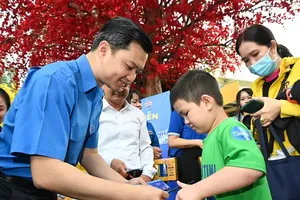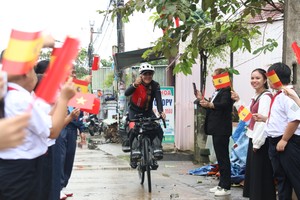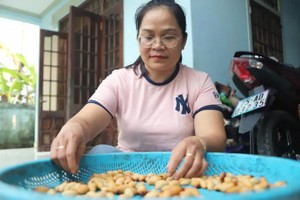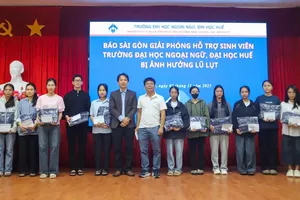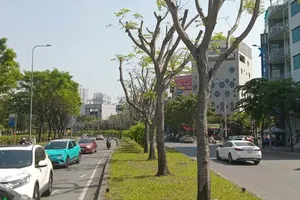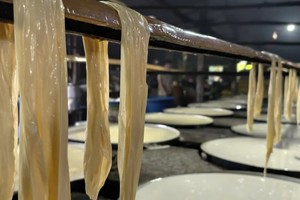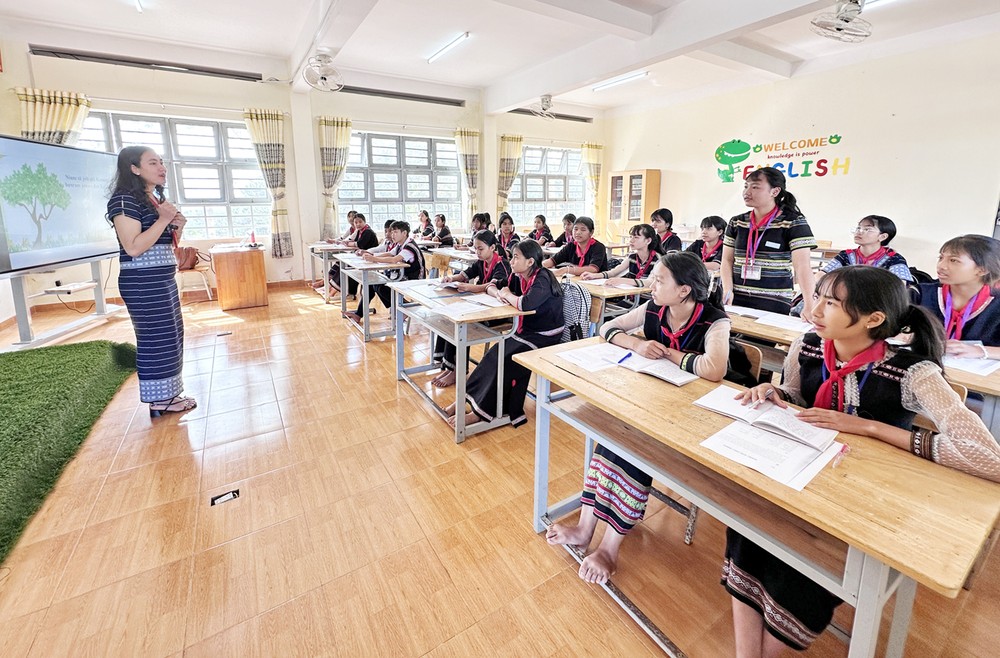
The preservation of indigenous K'Ho culture at Tan Thuong Secondary School in Di Linh District of Lam Dong Province is achieved through a multifaceted strategy that includes teaching K'Ho writing, gong playing, and xoang dancing, coupled with the promotion of traditional brocade attire among ethnic minority students at the beginning of the school week.
Unlike their peers from other schools, students at Tan Thuong Secondary School wear beautiful brocade outfits on the first day of the week. Female students wear dresses that blend traditional brocade with modern touches, while male students don bold, dynamic vests. Tan Thuong Secondary School serves nearly 400 students, over 90 percent of whom belong to the K'Ho ethnic group. Since 2022, the school has encouraged students and their families to wear brocade on Mondays and special occasions. To bring greater life and cultural richness to these traditional outfits, the school also offers classes in gong playing and xoang dancing.
In the school, the second class with 40 students aged 11-14, not only provides basic knowledge and gong playing techniques but also a journey to help them understand, appreciate and preserve their ethnic cultural identity.
Eighth grader Ka Trinh at Tan Thuong Secondary School shared that she has been learning xoang dance at school for 2 years now; therefore, she now can dance many welcome songs or join in the dance with her mother and grandmother at community festivals, and confidently instruct her younger siblings.
Similarly, the gong playing class has drawn strong interest from students. Eighth grader K’Hoang Duy at Tan Thuong Secondary School said that learning to play gongs at school is exciting for him and his friends. Although the class isn’t very long, it gives them enough time to get familiar with and perform the basic gong pieces of the ethnic group.
Gong artisans Da Cha Vu Bao and K'Niem from Dong Do village in Tan Nghia Commune of Di Linh District have been invited to conduct weekly gong lessons for students. Artisan Da Cha Vu Bao remarked, "Over the course of three months, students have gained a comprehensive understanding of fundamental gong techniques, including how to hold and play the instrument, as well as phrasing and accurately hitting the notes”.
In addition to technical skills, the artisans also instruct students in elegant and rhythmic movements each week in a classroom set against the backdrop of a pine hill, integrating these with traditional xoang dance to create captivating performances.
As a result, students not only become proficient in playing musical instruments but also gain insight into the deep cultural significance that gongs hold within their community. Within the expansive school building, the multi-purpose room serves as a space for teaching K'Ho writing to the students.
Literature teacher Ka Dúys at Tan Thuong Secondary School also instructs students in the K’Ho language. She shared, “While most students can communicate in their native language through listening and speaking, many have not yet developed writing skills in K’Ho.” As a member of the K’Ho ethnic group, teacher Ka Dúys feels a deep sense of joy and commitment to teaching K’Ho to the younger generation. “I am actively exploring and developing straightforward teaching methods to facilitate easier learning, quicker reading, and better retention for my students,” she added.
She revealed that students in the school are taught basic words in daily communication such as: jà hồi (launch, invite), pin (believe), jat (follow), di (correct), nuong (to), botao (build) or interspersed with words of educational nature to prevent social evils such as cit ma huu (inject drugs), jrao phiôn (opium), beta pin gioi (superstition), beta boto (education, teaching).
K’Kiet, a 9th grader, says that at first he only speak and understand the K’Ho language as passed down orally by his grandparents, but he has no knowledge of how to write it. After more than a year of learning, he can now read and write K’Ho fluently. This has deepened his understanding of the ethnic minority’s culture. Thus, he was delighted adding that when he returned home, he would teach his parents and uncles how to write basic daily words.
Principal Nguyen Van Dung of Tan Thuong Secondary School, noted: “Initially, it was challenging to encourage students and parents to wear traditional ethnic attire every Monday. Brocade is costly and not widely available, which made many families hesitant. The school took a proactive approach—both encouraging participation and seeking additional funding to support students from disadvantaged backgrounds.
To further preserve indigenous culture within the school, the school plans to collaborate with the Tan Thuong Commune Community Learning Center and local cultural authorities to launch more classes in K’Ho literacy and gong performance. These efforts aim to sustain and promote the cultural identity of the region’s ethnic minorities.



